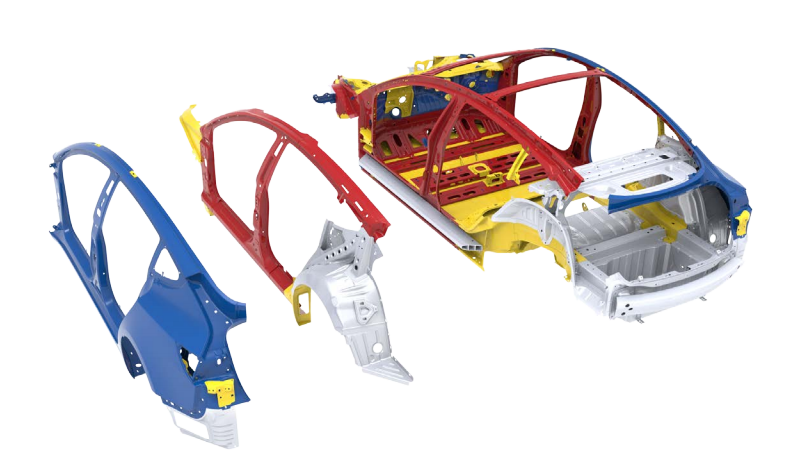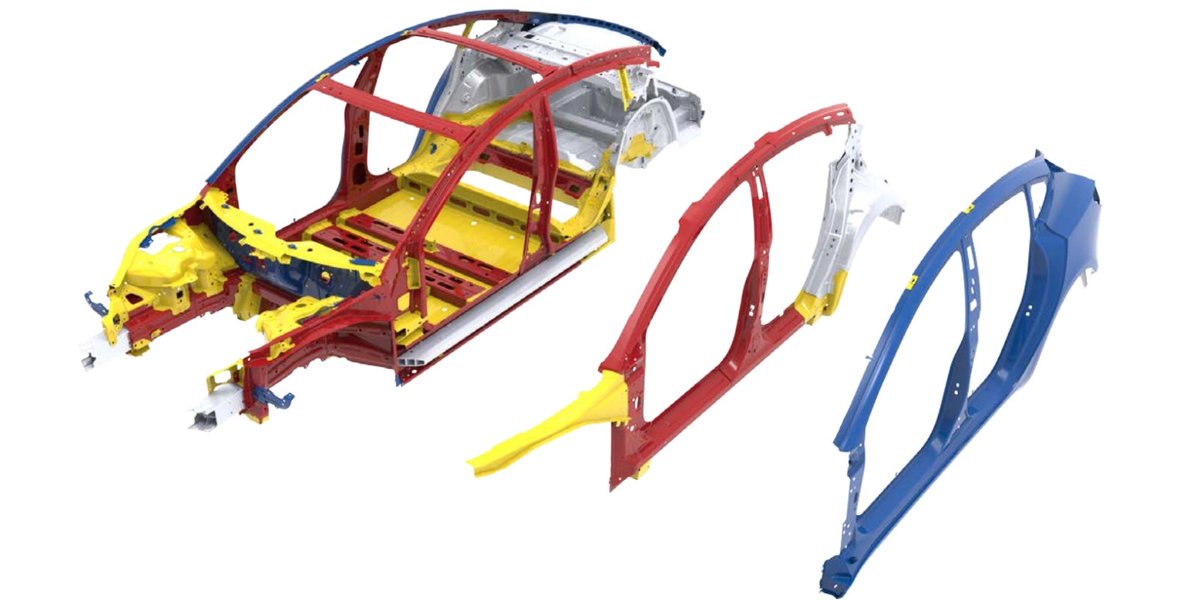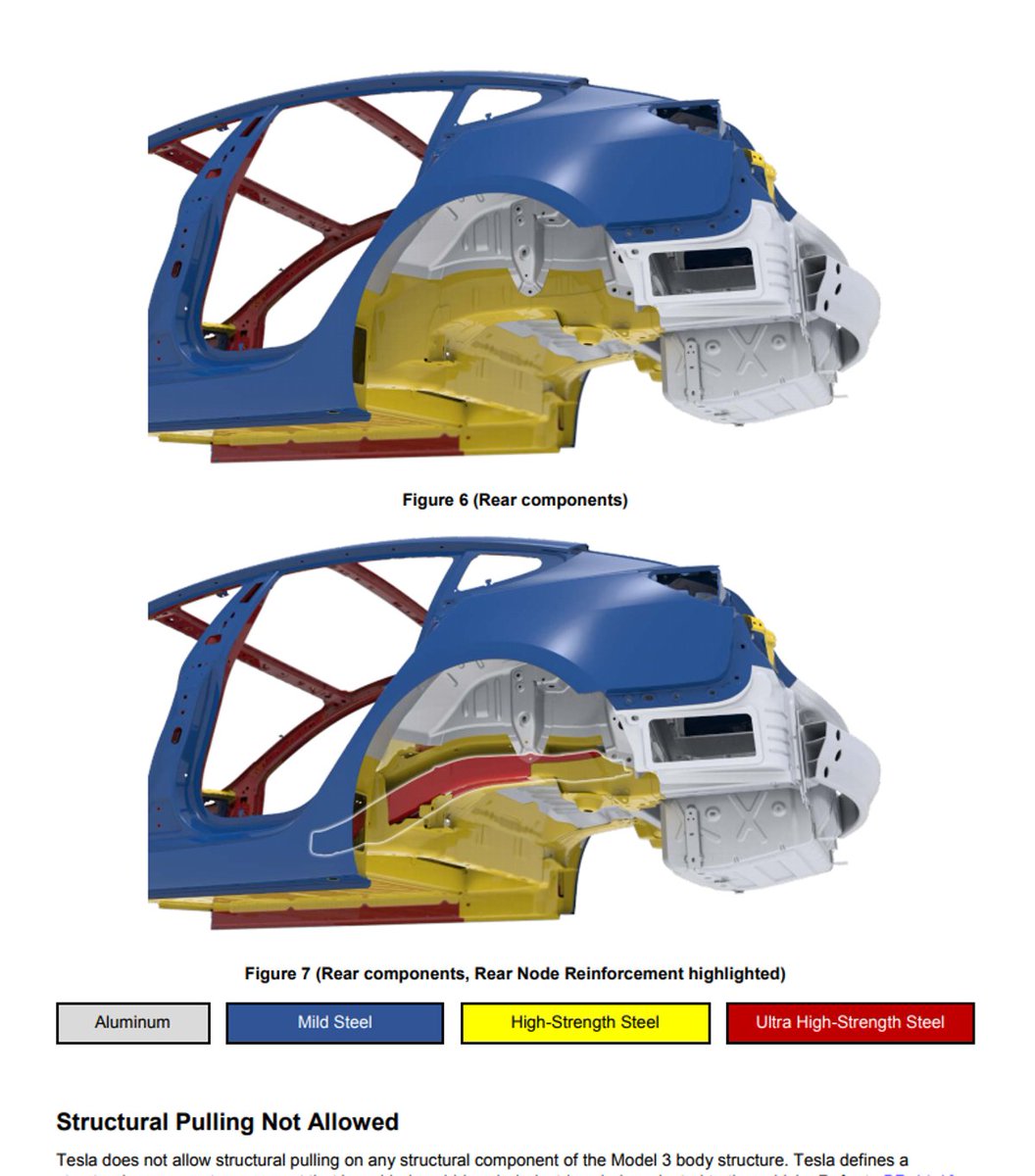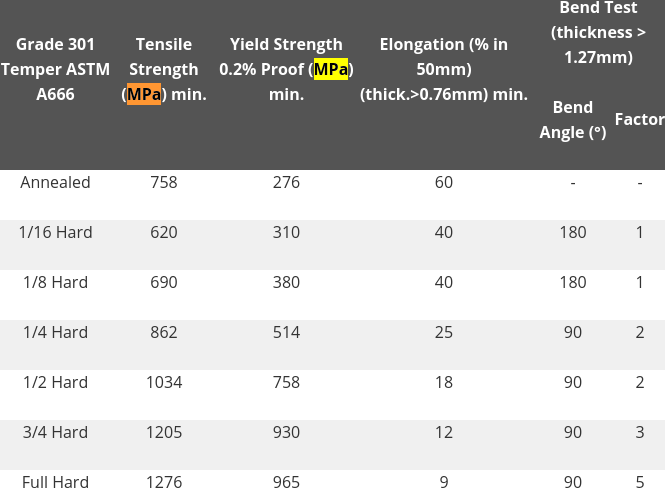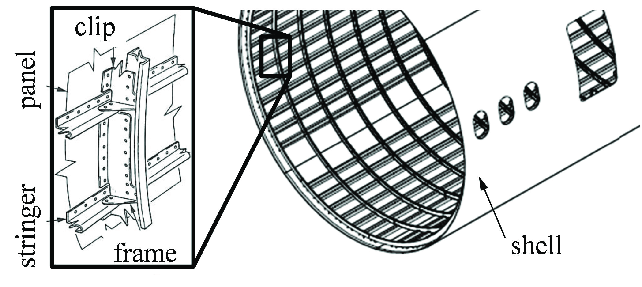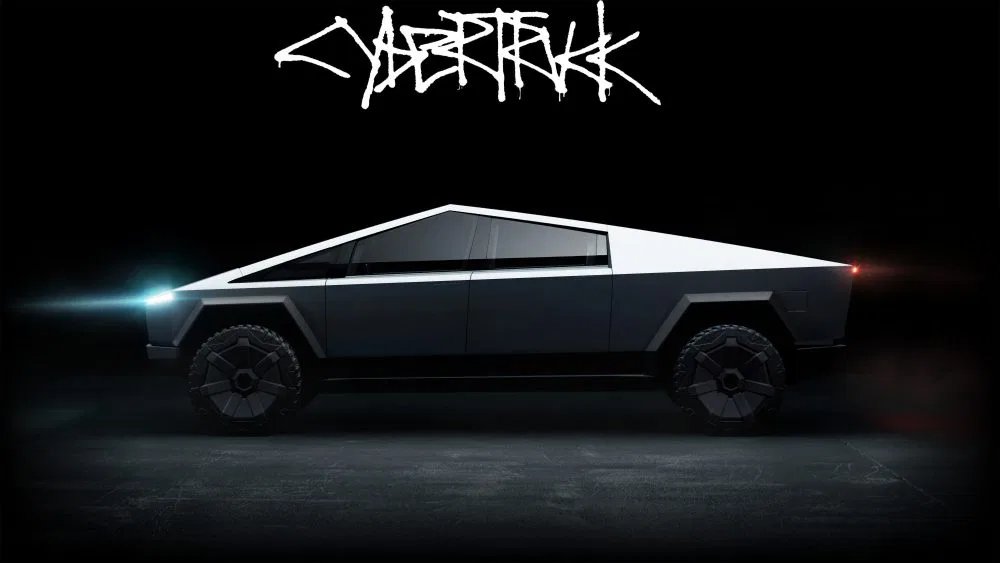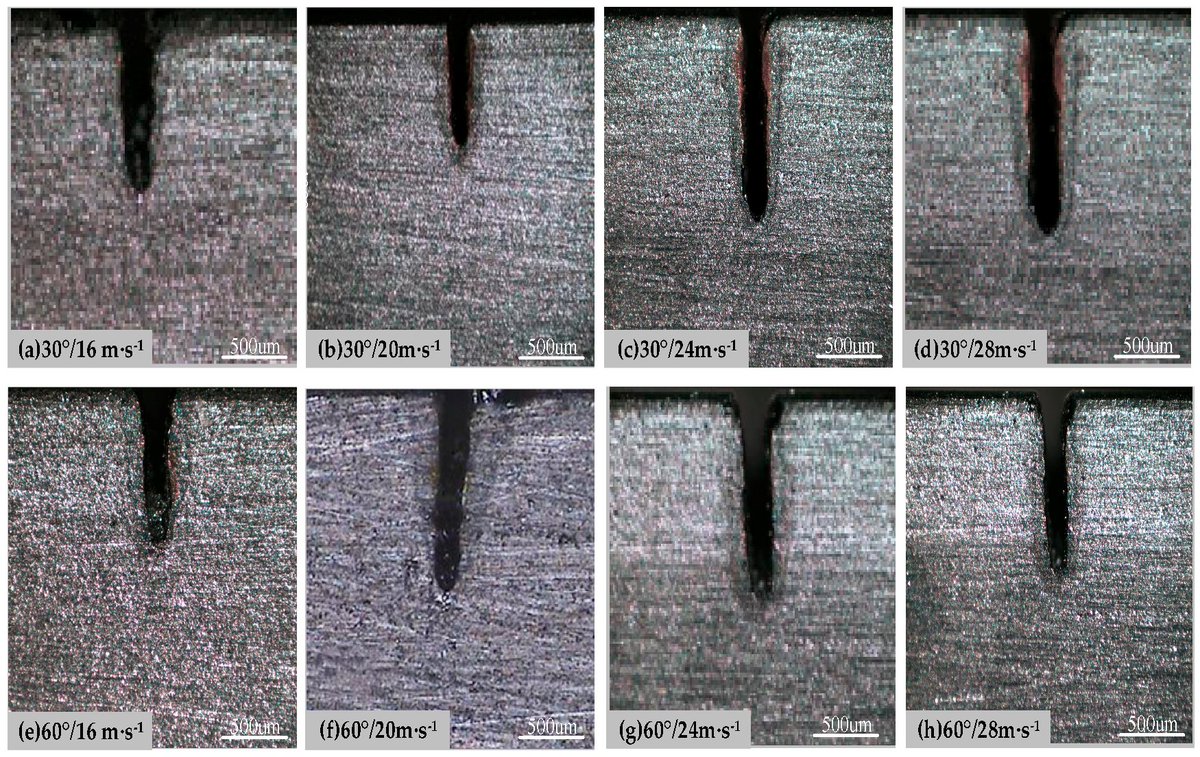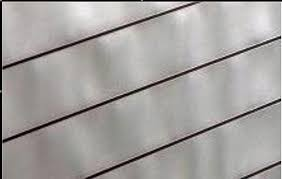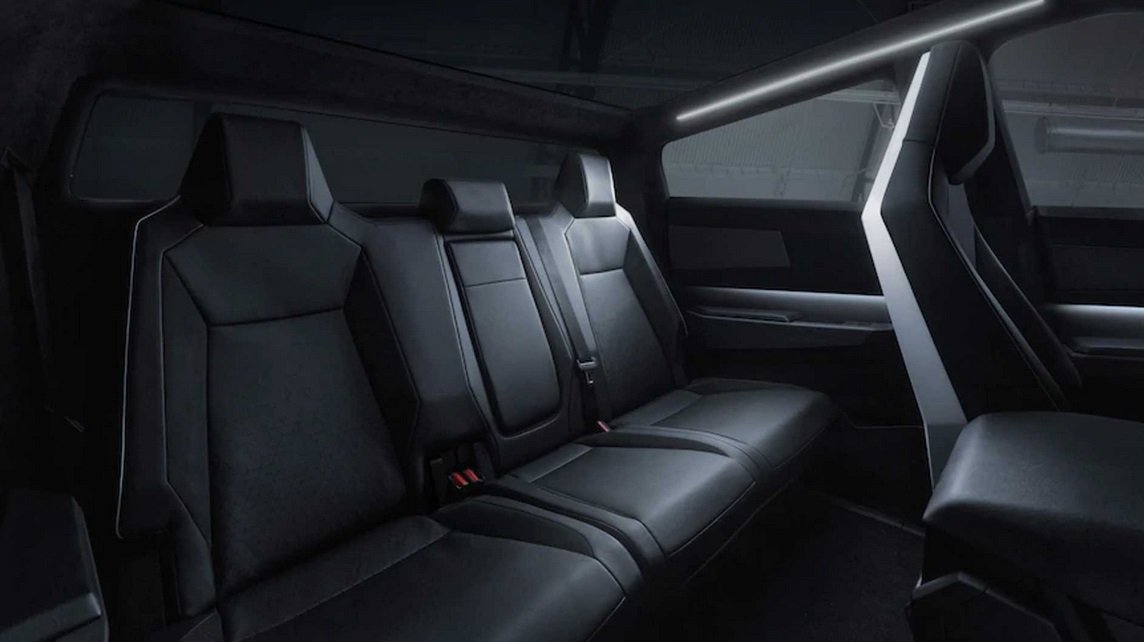Random observation of the day, re: Cybertruck.
Teslas already top the rankings in terms of crash test safety. A lot of this is due to the ultra-high strength steel (UHSS, red) passenger safety cell, on which lighter panels (mainly alumium, blue) are hung.
Teslas already top the rankings in terms of crash test safety. A lot of this is due to the ultra-high strength steel (UHSS, red) passenger safety cell, on which lighter panels (mainly alumium, blue) are hung.
While the point of crumple zones is to crumple, the point of passenger safety cells is to *not* crumple. Crumpling into the safety cell often means injured or killed passengers.
UHSS is any steel over 600 MPa, in contrast to mild steel (MS, grey) at <210 MPa, and HSS in-between.
UHSS is any steel over 600 MPa, in contrast to mild steel (MS, grey) at <210 MPa, and HSS in-between.
Cybertruck is to be built like an airplane or rocket - that is to say, a structural skin reinforced by ribs / stringers. This skin is said to be 301 full-hard stainless. Let's look up its tensile strength.
https://www.azom.com/article.aspx?ArticleID=960
1276 MPa. And there's suggestion of even higher.
https://www.azom.com/article.aspx?ArticleID=960
1276 MPa. And there's suggestion of even higher.
In short, if you were to graph out Cybertruck as per above, *the entire exterior would be red (and then some)*, thick and underlain by (also red) stringers for stiffening in 3d.
I don't care what you're hit with. I don't care what you drive off. This safety cell will *not* give.
I don't care what you're hit with. I don't care what you drive off. This safety cell will *not* give.
People often confuse safety cells and crumple zones, assuming that the whole car is supposed to crumple (as mentioned, it's not). Tesla will of course obviously design the front end to crumple in a *proscribed manner*, as all designers do. Likely with laser/water-cut weak points.

 Read on Twitter
Read on Twitter